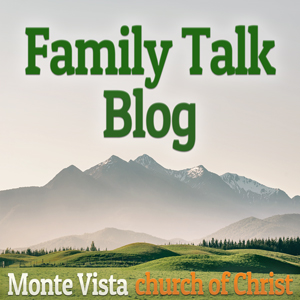Anytime a person is in the presence of some important official, company CEO, government official, or prominent celebrity, body language is an indication of the level of respect between the two. Residents of Asian nations greet each other by bowing. Bowing is a traditional way to show respect and recognition of status. There were times and nations when people prostrated themselves before their king. Some have shown concern over how we approach God in prayer. Should we stand, sit, bow, kneel, or a combination of these when we pray to the only true Living God.
First, the traditions of men practiced by some religious organizations may have a show of piety, appearing to honor and worship God. However, is there Biblical authority for the posture required to conform to the tradition? In Colossians 3:17, we learn, “And whatever you do, in word or deed, do everything in the name of (by the authority of) the Lord Jesus …” For prayer, the “word” is the thoughts in the prayer, and the “deed” is how we present ourselves in His presence. Of the two, there is more teaching in scripture concerning the content of the prayer than there is on the position or posture of the individual while praying.
Second, the position of the individual while praying is determined more by place and conditions than by command or tradition. In the crowded temple, standing to pray would be the only way possible (Mark 11:25; Luke 18:11-13). This practice is different from the standing to be seen of men mentioned in Matthew 6:5. Standing was a way Israel showed respect for God and His Law. Daniel stood up, trembling as the angel delivered God’s message (Daniel 10). All Israel stood up as the Law was read (Nehemiah 9). Jesus stood up to read scripture (Luke 4:16). Standing often requires much effort and helps focus on the words of prayer just as upon words read by someone. Jesus’ words in Mark 11:25 are not said as a command to stand while praying but are about the general practice of standing while praying.
There are some recorded as prostrating themselves before God. Joshua tore his clothes and fell to the earth on his face as he talked to the Lord (Joshua 7:6-9). A Samaritan leper fell on his face at Jesus’ feet to thank Him for healing his leprosy (Luke 17:16). In the majority of instances, it seems that men tried to hide their faces from God because of their sin. Elijah wrapped his face in his cloak when he heard the voice of The Lord (1 Kings 19:13). Jesus, who had no sin but in deep distress and emotion, fell to the ground as He prayed in the garden before His arrest (Mark 14:35). Many men have fallen to the ground to honor or worship God or those sent from God. Men and angels, delivering God’s word, tell people who fall before them to get up. However, God always accepts the prayers of the person who shows complete and total respect, and who falls before Him in worship.
Paul says in Ephesians 3:14, “For this cause I bow my knees unto the Father of our Lord Jesus Christ.” One of the most common postures mentioned in scripture as one prayed earnestly is kneeling. Jesus in Luke 22:41, Peter in Acts 9:40, Paul in Acts 20:36, and Paul and all with him Acts 21:5. There will come a time when everyone will “bow the knee,” praise Jesus as Lord and confess God (Philippians 2:9-11)
David sat and talked to The Lord about the promise of a secure thrown that would never end (1 Chronicle 17: 16).
Ezra and the people lifted their hands while standing and bowed their heads to the ground (Nehemiah 8:6). Jesus looked upward toward heaven to pray to His Father before His arrest (John 17:1). The “bowing of the head to the earth,” as expressed in 2 Chronicles 20:18, is mentioned with those who stood, knelt, and prostrated before the presence of God. However, the bending at the waist with face to the earth often refers to captives with a heavy burden like slavery.
So, with all the examples of the saints praying, there does not appear to be an “official posture” when it comes to prayer. As the heart of the individual fills with emotion, the prayer burst forth, unrestrained by sitting, standing, kneeling, lying, or even walking. The main points of prayer direct the prayer to the Father, through His Son, and according to His desires.
As we grow in knowledge, understanding, and wisdom, we are better able to talk to our Father “continuously” as we go about our daily activities. Then when we are alone, we can kneel, if physically able, bow the head in humility and pour out our hearts desires to the one and only God who can answer all our prayers.
Do you know Him well enough to talk to Him all day long?
